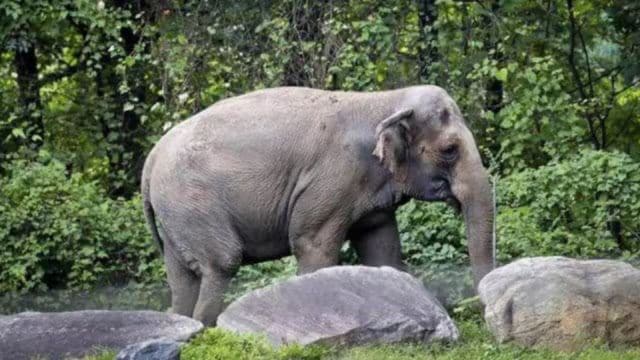Compared to the last all-India estimate in 2017 (27,312), the population is lower by 4,065 elephants, or 17.81%. However, the population report added a caveat that the two figures are not directly comparable due to a change in methodology, and said the latest estimate should be treated as a “new baseline.”

As per the latest data, elephant numbers remain highest in the Western Ghats (11,934), followed by the North Eastern Hills and Brahmaputra floodplains (6,559), Shivalik Hills and Gangetic plains (2,062), and Central India and Eastern Ghats (1,891).
Among states, Karnataka continues to harbour the largest population (6,013), followed by Assam (4,159), Tamil Nadu (3,136), Kerala (2,785), Uttarakhand (1,792), and Odisha (912).
 Among states, Karnataka continues to harbour the largest population (6,013), followed by Assam (4,159) and Tamil Nadu (3,136).
Among states, Karnataka continues to harbour the largest population (6,013), followed by Assam (4,159) and Tamil Nadu (3,136).
The Indian Express had first reported last October that the Union Environment Ministry had shelved an earlier version of the Status of Elephants in India 2022–23 report, citing delays in the census in the Northeast. The population estimates in that version are consistent with those presented in the latest report, which had also indicated a decline in elephant numbers.
On the mapping exercise in the Northeast, the report noted that data gathered during the first sampling period in 2023 — involving surveyors walking demarcated forest blocks — was extremely limited. As a result, it said, “it was not possible to model the density across the landscape” at that stage.
The latest report flags a range of threats across elephant habitats. In the Western Ghats, once home to a contiguous population, elephants are increasingly disconnected due to changing land use, including expanding coffee and tea plantations, invasive plant species, farmland fencing, and rapid development projects.
Story continues below this ad
It calls for better connectivity between elephant habitats and stronger law enforcement to ensure the species’ long-term survival, particularly in the Northeast.
In the Western Ghats, Shivalik Hills, and Brahmaputra plains, where elephants are most abundant, the report highlights habitat loss, fragmentation, and disruption of traditional corridors caused by railway lines, roads, power infrastructure, encroachments, and other land-use changes.
In Central India, mining pressures dominate as a major concern. The report also points to plant invasions, human-induced disturbance, and conflict with local communities as persistent challenges requiring cooperative engagement.
New methodology
The latest exercise adopted a new methodology modelled on the tiger estimation framework, in which forested habitats across 20 states were divided into smaller blocks or cells to record elephant signs and other indicators such as vegetation, presence of other mammals, and human disturbance.
Story continues below this ad
What distinguishes SAIEE 2021–25 is the use of a genetic mark–recapture model, where elephant dung samples are collected and analysed in laboratories to identify unique individuals. Using over 20,000 dung samples, scientists identified 4,065 unique elephants across major landscapes.
Since elephants lack distinctive physical markings like tigers’ stripes, DNA extracted from dung allows researchers to identify individuals and estimate population density. The genetic data, combined with ground surveys, feeds into a mathematical model to derive the final estimate of abundance.
Earlier elephant censuses relied on a mix of direct sightings, counts at waterholes, and dung-decay methods, where population density was inferred from how quickly dung was deposited and decayed. In recent rounds, this approach was refined by combining dung-decay data with sample block counts in 5 sq km areas, and then using extrapolation to estimate elephant numbers across larger landscapes.
For SAIEE 2021–25, India’s forests were divided into 100 sq km cells, further subdivided into 25 sq km and 4 sq km grids, which is a design borrowed from the tiger estimation program used since 2006. Data on elephants and other species have been collected under this framework largely for mapping distribution and relative abundance.



 Among states, Karnataka continues to harbour the largest population (6,013), followed by Assam (4,159) and Tamil Nadu (3,136).
Among states, Karnataka continues to harbour the largest population (6,013), followed by Assam (4,159) and Tamil Nadu (3,136).





